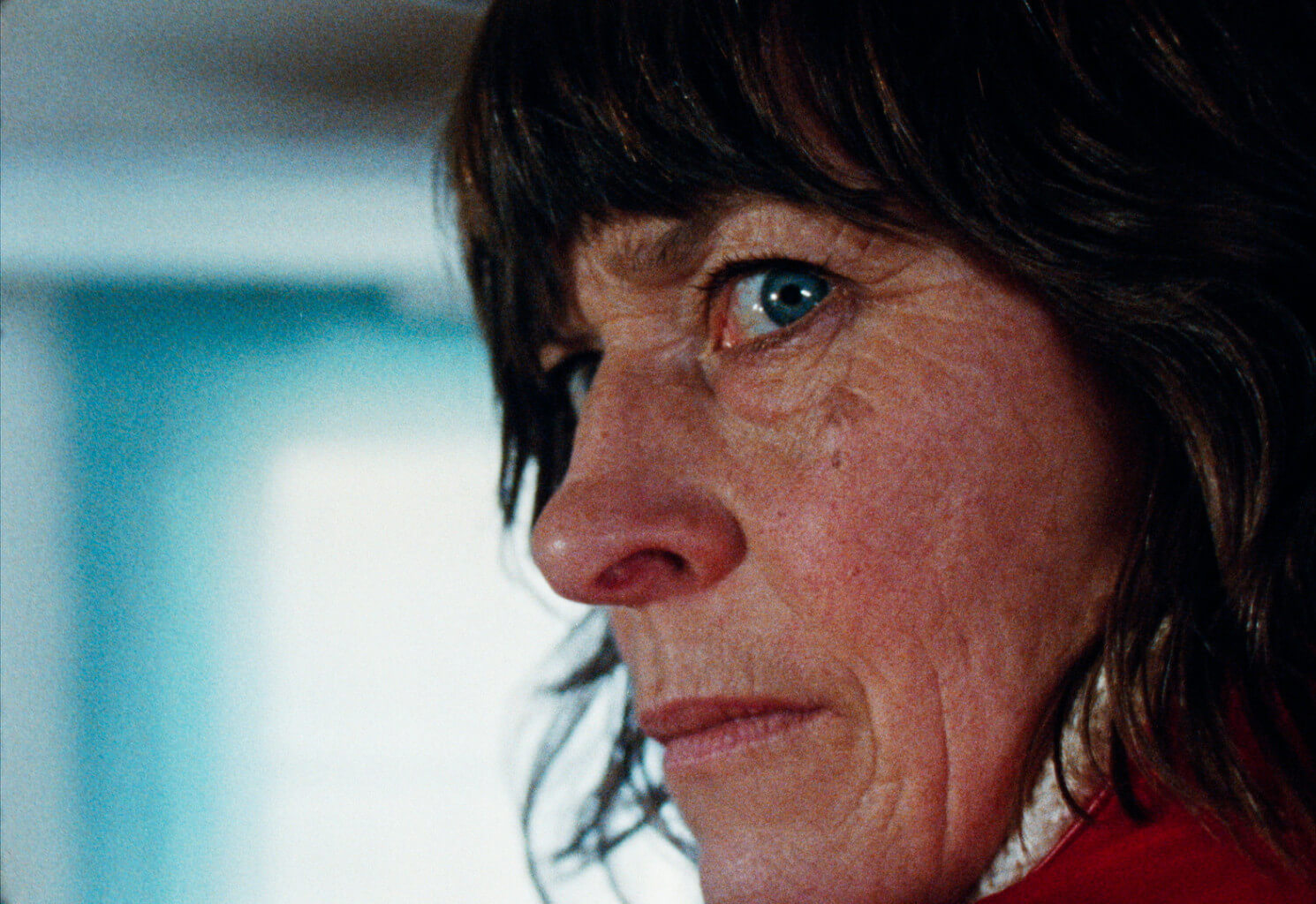Fresh from an American acquisition by taste-making distributor Neon, Enys Men has been one of the buzziest titles at Cannes for the last two days. But despite commercial potential in becoming the next big indie arthouse horror film, the cryptic psychological (or is it psychedelic?) folk horror fails to live up to the brouhaha.
Enys Men takes place on a titular island that is uninhabited except for the protagonist played by Mary Woodvine. She is documenting the changes on the island every day, and soon goes mad with desire. That is about all I can say about the story. I say “commercial potential,” because this has shades of The Lighthouse‘s massive breakout at the Directors’ Fortnight three years ago. Similarly shot on film in a boxy aspect ratio, the 16mm Enys Men certainly looks stunning. The deep focus flattens landscapes into colorful, painterly frames, with the occasional graphic or comedic insert. But that is where Enys Men‘s similarities with today’s wave of indie horror ends, as Enys Men is ten times more enigmatic than those A24 et al. titles. Enys Men is a nearly wordless, entirely imagery-driven film; the imagery is abstract, repetitive, and lasts the whole 90 minutes. (Don’t be confused by the above, single promotional image the production companies have provided, probably an attempt at misdirection or secrecy.) The story, if there even is one, takes place over multiple conflicting realities, basically encouraging the viewer not to piece together the puzzle logically.
That should certainly be praised for boldness, but boldness only gets you so far. The imagery is simply not as evocative as the film thinks it is, and sometimes even ventures into the explicitly intentional – not a problem when it’s explaining the protagonist’s desires, but a problem when it laughably rails against its mysterious tone. It’s also a problem when the film stays with the protagonist almost exclusively, but fails to explain her at all. Tellingly named only “The Volunteer,” her desires are at least clear in the first half, but begin to fade away as the film increasingly obfuscates. As the mosaic of images take over, director Mark Jenkin falls deeper and deeper into a rabbit hole, with the ending being a series of images in ostensibly random order. I say “ostensibly,” because I’m sure the order makes a lot of sense to Jenkin, but it’s an issue when it fails to translate to the viewer. It feels like the movie ended five times, with all of the shots in the last ten minutes vying for the final shot.
Still, it’s hard to decry such a formalist film. Based on pure aesthetics, many of the shots convey the clear sense of loneliness found in the stark films by similarly British auteur Lynne Ramsay. I’m sure Neon will hype up the film with its marketing machine and lure cinephiles into obsessing over each shot, and I’m sure they will come up with valid interpretations and appreciations much greater than my admittedly dismissive attempt. But that is precisely what I consider the fatal flaw of the film: even with such strong images, it left me disinterested in looking deeper.
